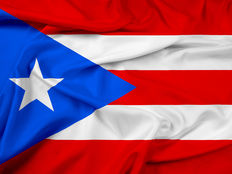
Governor Alejandro Garcia Padilla indicated that Puerto Rico would make good on its general obligation debt service payments, despite the commonwealth’s extreme financial challenges. The Government Development Bank confirmed that it paid out its latest installment of over $350 million. With another $363 million worth of general obligation payments due on January 1, the commonwealth continues to face an uphill battle to satisfy its creditors.
The recent payments were made possible by clawing back revenue from its non-general obligation debt, such as highway or convention center bonds, in an effort to continue pursuing a long-term solution with creditors through a restructuring. With over $70 billion worth of debt outstanding, these financial options are simply a short-term stop-gap and highlight the severity of the island’s liquidity crisis.
Going Bankrupt
Many municipal bond funds had been accumulating Puerto Rico’s debt due to its attractive yield relative to traditional muni bonds, but importantly, they are not supported by U.S. bankruptcy laws and aren’t eligible to receive a bailout. If the commonwealth ends up defaulting, it could face lengthy battles in court and experience troubles selling bonds in the future to finance a turnaround for its fledgling economy.
Without significant changes and investment, it appears increasingly unlikely that Puerto Rico will be able to reverse its fortunes. The commonwealth has laid off over 30,000 employees, closed nearly 200 schools, raised taxes across the board and reformed pension funds, which has led more than 300,000 of its citizens to move to the mainland. Of course, these dynamics have only exacerbated its financial problems and reduced its tax base.
The Obama Administration and certain members of Congress have supported changing the law in order to enable the commonwealth to utilize bankruptcy protection to resolve its debts in much the same way that states are permitted. Under such a plan, the White House would set up a financial control board similar to the one established in Washington DC two decades ago, which would help ensure that fiscal matters would be kept in check.
Austerity Options
Those opposed to providing Chapter 9 protection to Puerto Rico insist that bankruptcy rulings would only delay solving the real fiscal issues affecting the island and may create a moral hazard in the financial markets. After all, investors that purchased the commonwealth’s bonds knew at the start that they were not guaranteed by the U.S. government and benefited from the higher yields that were paid as a result.
Austerity has proven to be a mixed bag judging by the situation in Greece and the unique dynamics affecting Puerto Rico. After making fiscal adjustments that decrease economic activity and revenue, the government could find itself in a viscous cycle of making additional adjustments to make up for the lack of economic activity. The ease of moving to the U.S. mainland may also harm the country as its tax base continues to dwindle.
The Bottom Line
Puerto Rico faces over $70 billion in debt that it is almost certainly unable to service as is, which means that a restructuring with creditors will be necessary. While the commonwealth made its most recent payment by borrowing from non-GO bonds, these are temporary measures that it won’t be able to implement for much longer, especially with another $363 million worth of general obligation bonds due on January 1.






